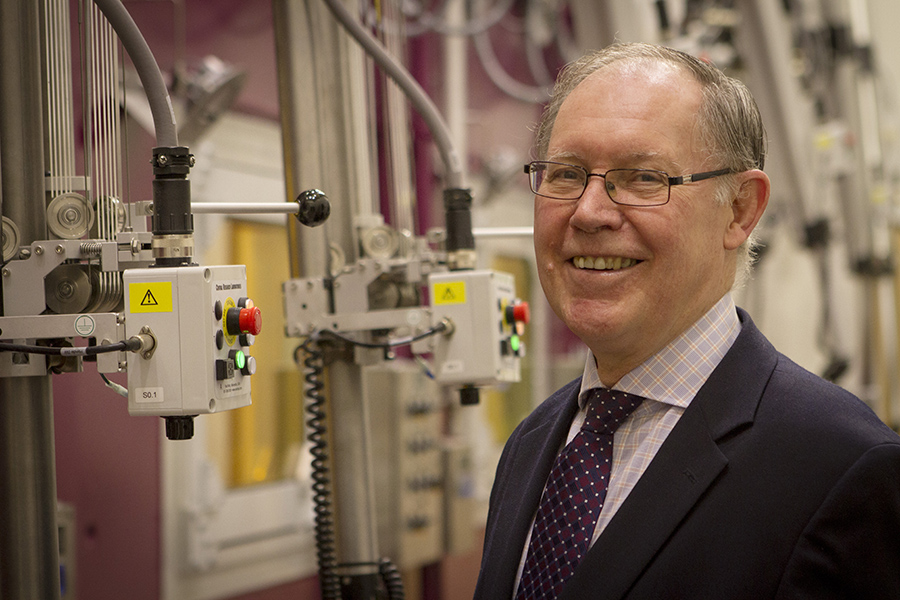Keeping nuclear power safe in Canada, and around the world

November 6, 2017
It’s a wonder John Luxat can sleep at night.
The Industrial Research Chair in Nuclear Safety Analysis studies severe accident mitigation and on a routine basis learns every detail about the world’s worst human-made disasters – Fukushima, the Challenger, the ill-fated ship MV Doña Paz, on which 4,000 people perished in a collision with an oil tanker.
In short, Luxat has made it his life’s work to study what actions lead to things going wrong.
Early in his career, Luxat applied that curiosity to nuclear safety, getting involved early in Canada’s nuclear program. As a student in Rhodesia in the 1960s (before it became Zimbabwe), Luxat studied electrical engineering. As the country fell into civil war, he fled and continued his studies in South Africa, then Canada, where he completed a PhD and P.Eng. at the University of Windsor.
At the time, nuclear power was hot in Canada. The country was developing CANDU reactors for home and abroad. Luxat studied nuclear safety, nuclear engineering, thermohydraulics and reactor physics at Windsor and was fascinated with control theory – essentially, the science behind making machines do what you want them to do. He cut his teeth at Atomic Energy of Canada Limited, where he helped develop a plant simulation program for the Crown corporation.
Over the years, Luxat has examined severe accidents in hopes of improving their outcomes. He loves the field of study, as it brings together many disciplines of engineering: materials, chemistry, structural mechanics, reactor physics, semi-heat transfer.
And, he says, McMaster is the perfect place for his research.
The University has been an international hub for nuclear physics since 1959, when it built the McMaster Nuclear Reactor, the first university-based research reactor in the British Commonwealth.
It features six beamlines—vacuum tubes used to conduct tests on materials to figure out their characteristics.
All year round, private companies, researchers from the world over and students come to conduct neutron irradiations in the hundreds of thousands and study materials using the beamlines. Many of them are used for industry, such as mining, environmental samples or aviation. (Nray Services Inc conducts quality assurance testing on every turbine blade for a jet engine manufactured in North America in a dedicated beam line here.)
The reactor is also a world leader in the production of iodine-125, a radioactive isotope that is used in the treatment of prostate cancer, with hundreds of doses produced each week.
But the reactor is just the beginning. Now that many of the nuclear power plants built in the 1960s are coming up to their expiry date, John Luxat conceived of a lab where the materials from the aging facilities could be tested and better understood. He secured funding for a $24 million lab, opened in 2016. It’s the only facility of its kind in the world.
The lab features five “hot cells,” which are small, lead-shielded rooms capable of handling, testing and examining radioactive material.
Each room has its own pair of robotic arms which can examine materials such as the zirconium alloy tubes, which are the type used to contain fuel bundles in CANDU reactors. The tubes get sliced and stretched and stress-tested, then examined under a microscope to understand what they’re capable of enduring.
The lab also contains a 3-D atom probe. This highly sought-after testing device peels off layers from a specimen, atom by atom, allowing scientists to probe not only the surface, but also right into the material itself, allowing them to gain detailed knowledge of the structure of the material, right down to the atomic scale.
Using the lab’s sophisticated computers and software, Luxat and his team can then construct a 3D model of the sample using the information they gathered.
Needless to say, the results from this detailed testing will help keep aging reactors safe–and extend the life not only of Canada’s own nuclear reactors but also other CANDU reactors around the world.


